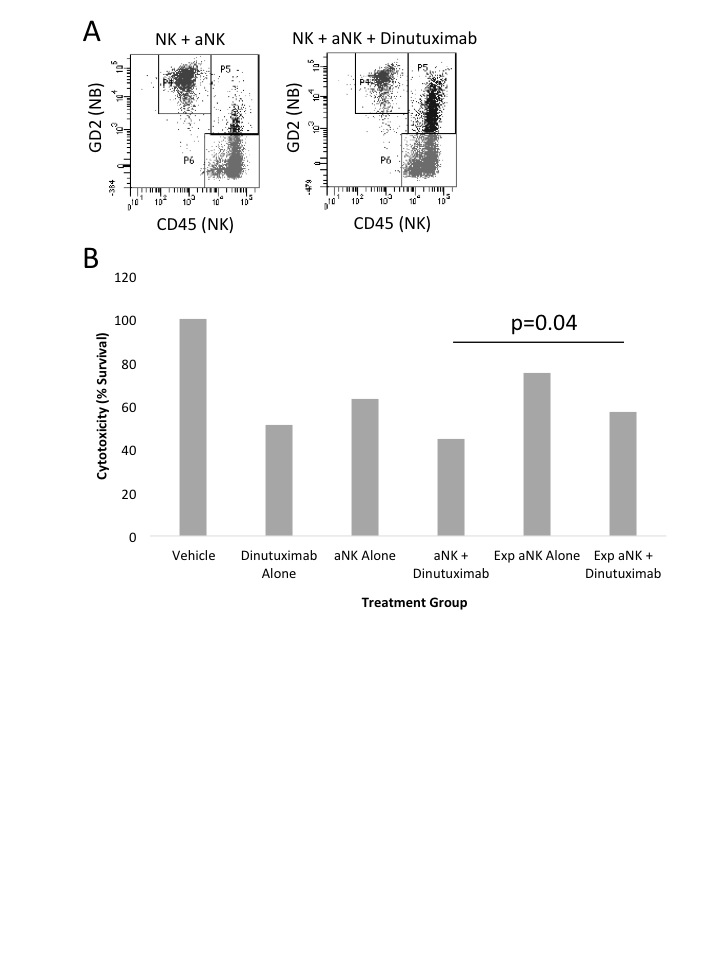A. K. Zamora1, M. J. Zobel1, J. Sun2, T. Lin2, M. Sheard2, R. C. Seeger2, E. S. Kim1 1Children’s Hospital Los Angeles,Pediatric Surgery,Los Angeles, CA, USA 2Children’s Hospital Los Angeles,Hematology Oncology,Los Angeles, CA, USA
Introduction:
Children with high-risk neuroblastoma (NB) have a poor prognosis with an overall survival of less than 50%. The anti-GD2 monoclonal antibody, dinutuximab, has been shown to improve survival but many children recur with resistant disease. We recently discovered that treating neuroblastoma cells with activated natural killer cells (aNK) and dinutuximab leads to tumor cell death and transfer of the neuroblastoma membrane marker GD2 to the natural killer cells, a phenomenon called trogocytosis. We characterize the process of trogocytosis following immunotherapy and hypothesize that these “experienced” NK cells have decreased efficacy in killing neuroblastoma cells.
Methods:
Human NB cells from the CHLA255-fluc cell line were treated with vehicle control, dinutuximab (100ng/mL) alone, aNK cells alone, or aNK cells plus dinutuximab. The treatment groups were then incubated, harvested hourly from 0 minutes to 6 hours, and analyzed by flow cytometry to evaluate GD2 (APC) and CD45 (AlexaFluor-488) expression. Live cell microscopy images were obtained at various timepoints. The “experienced” GD2+ NK cells were then incubated with fresh NB cells for 6 hours. Luciferase cytotoxicity assays were then performed to evaluate the efficacy of the “experienced” GD2+ NK cells compared to fresh NK cells. Student’s t-test was performed; p<0.05 is significant.
Results:
Utilizing flow cytometry, a novel GD2+/CD45+ population is observed and reaches maximal expression at 37.9% following aNK + dinutuximab treatment at 3 hours (Figure 1A). As tumor cells are killed, there is a notable time-dependent loss of GD2 expression (NB cells) with a concomitant rise in the GD2+/CD45+ cohort. Live cell imaging demonstrates the uptake of NB membrane-bound GD2 by the CD45+ NK cells, resulting in GD2+ NK cells. Lastly, the “experienced” GD2+ NK cells demonstrated significantly decreased cytotoxicity to NB cells compared to fresh NK cells (p=0.04, Figure 1B). This trogocytosis effect is dependent on dinutuximab as the cytotoxicity of fresh NK cells alone does not significantly differ from “experienced” NK cells alone (p=0.13).
Conclusion:
Our study demonstrates the novel phenomenon of trogocytosis, by which NK cells acquire the GD2 neuroblastoma membrane receptor following combination immunotherapy, which may represent a novel mechanism of resistance. Ongoing in vitro, in vivo, and patient specimen studies are being conducted to further characterize and validate the functional effects of trogocytosis on immunotherapy for neuroblastoma.
